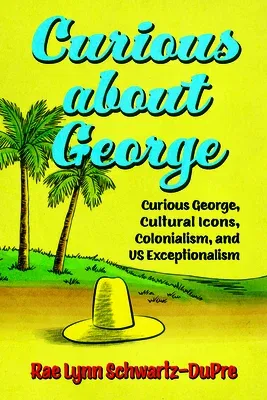In 1940, Hans Augusto Rey and Margret Rey built two bikes, packed what
they could, and fled wartime Paris. Among the possessions they escaped
with was a manuscript that would later become one of the most celebrated
books in children's literature--Curious George. Since his debut in
1941, the mischievous icon has only grown in popularity. After being
captured in Africa by the Man in the Yellow Hat and taken to live in the
big city's zoo, Curious George became a symbol of curiosity, adventure,
and exploration. In Curious about George: Curious George, Cultural
Icons, Colonialism, and US Exceptionalism, author Rae Lynn
Schwartz-DuPre argues that the beloved character also performs within a
narrative of racism, colonialism, and heroism.
Using theories of colonial and rhetorical studies to explain why
cultural icons like Curious George are able to avoid criticism,
Schwartz-DuPre investigates the ways these characters operate as
capacious figures, embodying and circulating the narratives that
construct them, and effectively argues that discourses about George
provide a rich training ground for children to learn US citizenship and
become innocent supporters of colonial American exceptionalism. By
drawing on postcolonial theory, children's criticisms, science and
technology studies, and nostalgia, Schwartz-DuPre's critical reading
explains the dismissal of the monkey's 1941 abduction from Africa and
enslavement in the US, described in the first book, by illuminating two
powerful roles he currently holds: essential STEM ambassador at a time
when science and technology is central to global competitiveness and as
a World War II refugee who offers a "deficient" version of the Holocaust
while performing model US immigrant. Curious George's twin heroic roles
highlight racist science and an Americanized Holocaust narrative. By
situating George as a representation of enslaved Africans and Holocaust
refugees, Curious about George illuminates the danger of contemporary
zero-sum identity politics, the colonization of marginalized identities,
and racist knowledge production. Importantly, it demonstrates the ways
in which popular culture can be harnessed both to promote colonial
benevolence and to present possibilities for resistance.


